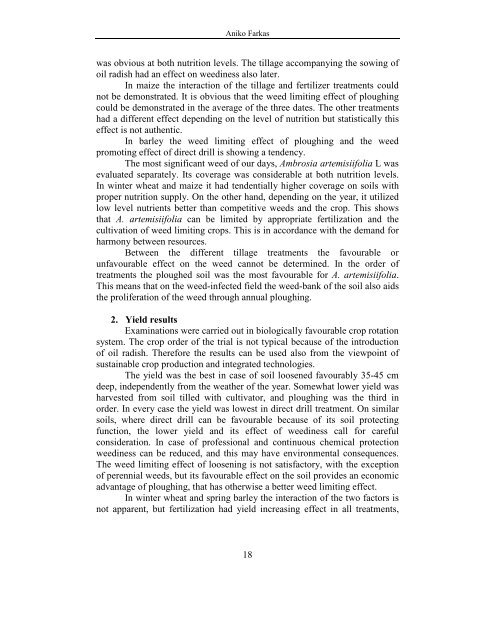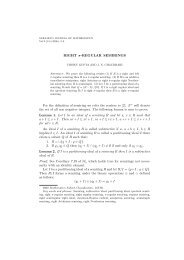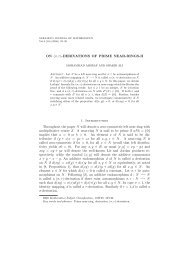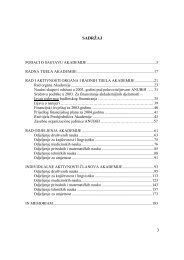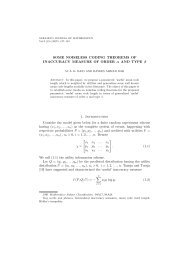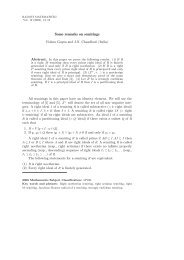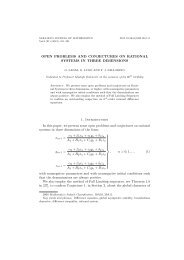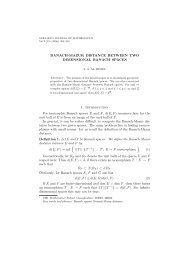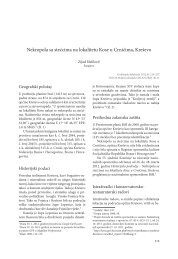HERBOLOGIA - anubih
HERBOLOGIA - anubih
HERBOLOGIA - anubih
You also want an ePaper? Increase the reach of your titles
YUMPU automatically turns print PDFs into web optimized ePapers that Google loves.
Aniko Farkas<br />
was obvious at both nutrition levels. The tillage accompanying the sowing of<br />
oil radish had an effect on weediness also later.<br />
In maize the interaction of the tillage and fertilizer treatments could<br />
not be demonstrated. It is obvious that the weed limiting effect of ploughing<br />
could be demonstrated in the average of the three dates. The other treatments<br />
had a different effect depending on the level of nutrition but statistically this<br />
effect is not authentic.<br />
In barley the weed limiting effect of ploughing and the weed<br />
promoting effect of direct drill is showing a tendency.<br />
The most significant weed of our days, Ambrosia artemisiifolia L was<br />
evaluated separately. Its coverage was considerable at both nutrition levels.<br />
In winter wheat and maize it had tendentially higher coverage on soils with<br />
proper nutrition supply. On the other hand, depending on the year, it utilized<br />
low level nutrients better than competitive weeds and the crop. This shows<br />
that A. artemisiifolia can be limited by appropriate fertilization and the<br />
cultivation of weed limiting crops. This is in accordance with the demand for<br />
harmony between resources.<br />
Between the different tillage treatments the favourable or<br />
unfavourable effect on the weed cannot be determined. In the order of<br />
treatments the ploughed soil was the most favourable for A. artemisiifolia.<br />
This means that on the weed-infected field the weed-bank of the soil also aids<br />
the proliferation of the weed through annual ploughing.<br />
2. Yield results<br />
Examinations were carried out in biologically favourable crop rotation<br />
system. The crop order of the trial is not typical because of the introduction<br />
of oil radish. Therefore the results can be used also from the viewpoint of<br />
sustainable crop production and integrated technologies.<br />
The yield was the best in case of soil loosened favourably 35-45 cm<br />
deep, independently from the weather of the year. Somewhat lower yield was<br />
harvested from soil tilled with cultivator, and ploughing was the third in<br />
order. In every case the yield was lowest in direct drill treatment. On similar<br />
soils, where direct drill can be favourable because of its soil protecting<br />
function, the lower yield and its effect of weediness call for careful<br />
consideration. In case of professional and continuous chemical protection<br />
weediness can be reduced, and this may have environmental consequences.<br />
The weed limiting effect of loosening is not satisfactory, with the exception<br />
of perennial weeds, but its favourable effect on the soil provides an economic<br />
advantage of ploughing, that has otherwise a better weed limiting effect.<br />
In winter wheat and spring barley the interaction of the two factors is<br />
not apparent, but fertilization had yield increasing effect in all treatments,<br />
18


